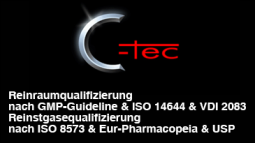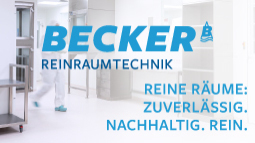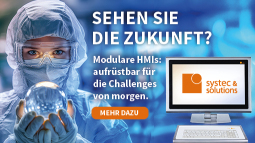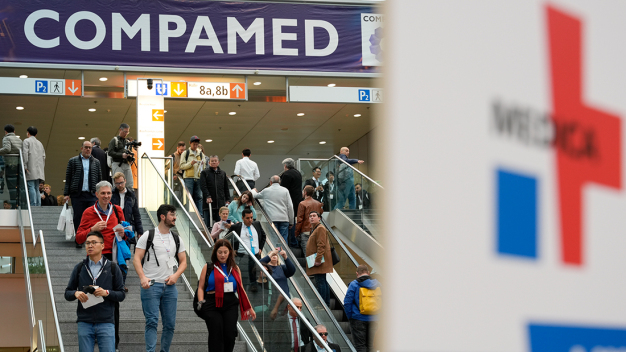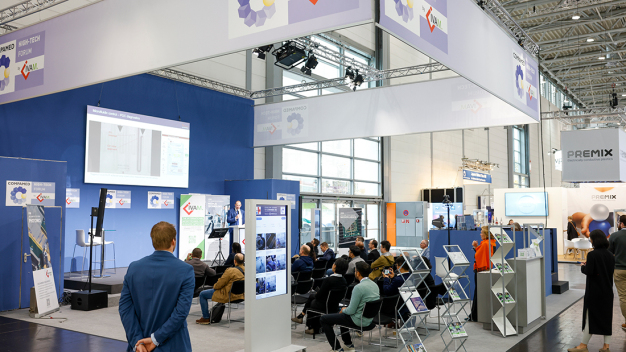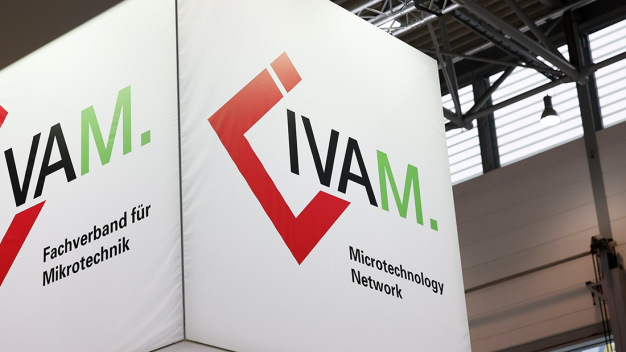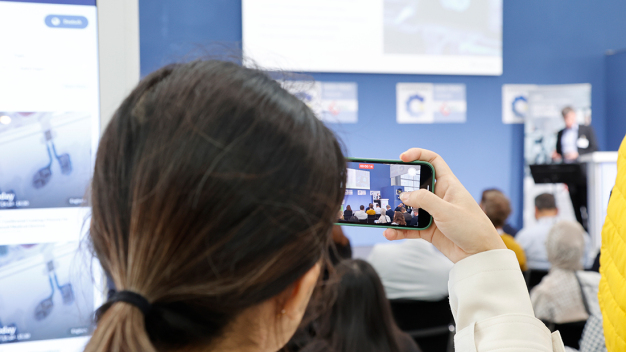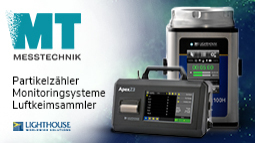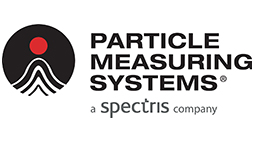- Trade fair
The 2025 COMPAMED Innovation Forum
Pioneering work in cancer diagnostics - medical technology plays a crucial role
Cancer cases are among the big challenges faced by global healthcare systems. The incidence has risen in recent decades, not least on account of demographic change and escalating risk factors. Simultaneously, diagnostic methods are improving all the time, ensuring that cancer gets detected sooner and more frequently. Keeping pace with these developments, the 2025 COMPAMED Innovation Forum, organized by the International Microtechnology Business Network IVAM, was devoted to the very latest advancements in cancer diagnostics. Its participants peered into the future – with an eye not only to potentials and trends in medical technology, but also to COMPAMED, which will take place in trade fair halls 8a and 8b between 17 and 20 November in Düsseldorf.
With its some 750 exhibiting companies, the leading international trade fair for suppliers of the medical technology industry, which is always held in parallel to the world’s leading medical trade fair MEDICA, offers the full spectrum of materials, microtechnology, components and services for use by the medical technology industry.
There were 19.3 million new cases of cancer and 10 million deaths globally in 2020 – most frequently due to lung, breast, bowel and prostate cancer. The most common tumour entities are carcinomas of the lungs, breast, bowel and prostate. A considerable increase continues to be observable primarily in lung and liver cancer. Tobacco consumption, overweight, lack of exercise, chronic infections (such as caused by Hepatitis B and C or HPV), unhealthy nutrition and alcohol consumption are held to be the most significant risk factors for cancer. Further causes are rooted in environmental toxins and occupational exposure to carcinogenic substances. Genetic factors, along with ageing processes, favour the emergence and progression of tumours.
In order to counter these developments, preventive measures are every bit as crucial as advancements in diagnostics and treatment. Tobacco and alcohol prevention, the promotion of an active lifestyle, vaccination programmes and health-promoting nutrition form the basis of the measures that are effective at the individual level. Parallel to those, research is aimed at early detection by means of biomarkers and high-resolution imaging, as well as at personalized treatment strategies that combine immunotherapy treatments with targeted active substances. Together, these aspects form a strategy to relieve the burden on healthcare systems and for the individual reduction of disease burden and suffering due to cancer.
Right at the start of the COMPAMED Innovation Forum, the event’s significance was underscored by Tim Merforth, Chairman of the Executive Board of IVAM since May 2025: “The COMPAMED Innovation Forum delivers an annual look ahead at trends in the industry. It outstandingly sets the mood for COMPAMED in November.” And in his opening words, Jens Ebnet, Managing Director of Ebnet Medical, emphasized: “Innovations must take utmost priority in the fight against cancer.”
Can inflammation cause cancer? A link that is underestimated
In his contribution, “Inflammation: It is a key role from oncogenesis to palliative treatment”, Dr. Coenraad K. van Kalken (Excellent Care Clinics / Remicine BioSciences) talked about inflammation before and during a case of cancer. He has been conducting research into cancer for more than 30 years and highlighted that stronger consideration needed to be given to immunological reactions. Since cancer was often only detected at a late stage, he explained, a look at inflammation processes inside the body could assist early detection. But he said that inflammation processes are also relevant once cancer takes hold: they contribute to the chronic fatigue experienced by cancer patients.
To treat this fatigue, he is testing the use of the local anaesthetic Lidocaine in a targeted lymphatic application. This originally comes from the treatment of Long Covid: and promising effects were also observed among tumour patients with chronic fatigue by van Kalken and his team. He explained that chronic inflammation, triggered by toxins from cigarette smoke for instance, provokes continuous tissue damage, thereby promoting carcinogenesis. For that reason, he makes the call not only to incorporate cellular disease mechanisms, but also immunological processes in treatment and diagnostics. He stated: “There is still considerable potential for improvement in cancer survival rates. Our efforts should be directed towards timelier diagnoses and the development of personalized treatments.”
How centrifugal microfluidics makes liquid biopsies more efficient
Dr. Jan Lüddecke from Hahn-Schickard presented the latest advancements in research into extracellular vesicles (EV) in “Unlocking new liquid biopsy cancer markers with centrifugal microfluidics”. EVs are particles that are shed by all cells in the body and can be isolated from all body fluids in the form of biomarkers. “Extracellular vesicles reflect the condition of the organism as a whole. This makes them more useful in diagnostics than conventional biomarkers,” reports Dr. Jan Lüddecke from Hahn-Schickard.
Hitherto, there has been a lack of standardized methods for the isolation of extracellular vesicles from body fluids – which represents a focal obstacle to their widespread use in research and diagnostics. Lüddecke and his team are therefore working on a standardized, automated method for purification on the basis of the LabDisk technology from Hahn-Schickard. This involves purifying the sample via centrifugal forces. Using the compact LabDisk Player, single slices can be analysed, while a pipetting robot – currently under development as a demonstrator – is able to work on multiple discs automatically. Future goals include EV isolation from whole blood and validation in clinical projects like KI-VesD, which is dedicated to monitoring prostate cancer.
Temperature-based tumour detection enabled by fibre-optic endoscopy
In his contribution, “Innovative fiber solutions to enhance cancer diagnostics”, Dr. Viacheslav Artyushenko from art photonics outlined an optical method for intra-operative tumour demarcation. He explained its relevance: “For precise tumour removal, a tumour’s operative edge needs to be known.” Polycrystalline infrared fibres are being developed by art photonics to that end. These fibres can be used as flexible probes in endoscopes and indicate temperature differences between tumorous and healthy tissue.
A clinical study in Tel Aviv was able to distinguish among spectra of melanomas as well as basal and squamous cell carcinoma. With the Fiber Optic Molecular Sensor (FOMS), likewise under development at art photonics, various biomarkers in tumour tissue, such as glucose and water, can be detected in vitro so far. art photonics is also working on substituting spectrometers for cost-effective NIR LED sensors. These could be integrated with remote surgery applications, for example.
Multiplex biomarker diagnostics under the microscope
In “Pioneering photonic solutions for revolutionizing early diagnostics”, Anke Schütz-Trilling from Surfix presented a point-of-care platform for the rapid multiplex diagnosis of multiple biomarkers. The benchtop device from Surfix achieves laboratory precision for up to five biomarkers in only 15 minutes. “This sensitivity will open up new market segments for point-of-care technologies,” said Schütz-Trilling. Selective chip coating by Surfix makes it possible to detect proteins and metabolites circulating in the blood in low concentrations.
Surfix is a partner in the PHOBICCS project, working on the development of a photonic biosensor for the improved early detection of bowel oedema. In the YOLOFITIS project, the company’s focus is a cortisol measuring system. The purpose of this is to monitor adrenal insufficiency (Addison’s disease), which can also occur as a side-effect of cancer immunotherapy. Summing up, Schütz-Trilling declared: “Proteins and metabolites show what’s actually going on in the body.”
Quantum microscopy in cancer diagnostics: sharpening the vision with twin photons
In “Quantum microscopy for cancer diagnosis”, Dr. Valerio Gili from Fraunhofer IOF expounded quantum microscopy’s potentials for oncology. He explained that quantum effects in imaging enhance resolution, improve the signal-to-noise ratio, enable imaging in the near-infrared range and can even be applied in poor lighting. Fraunhofer IOF is currently researching a method of non-linear interferometry using twin photons. This allows the imaging of objects that have never directly interacted with photons. The institute aims to develop the currently experimental set-up into a tenable system, as it pursues its long-term goal of integrated quantum imaging systems. Gili emphasized: “Quantum photonics can deliver added value for cancer diagnostics.”
Animal experiments replaced by high-tech vascularized organoids
The focus of Samantha Paoletti, from CSEM, in “Innovative technologies for personalized cancer care: Advancing detection and treatment” was on the automation and standardization of work with tumour organoids. These can be used as a pre-clinical test system for active substances. On commencing, she pointed out the high costs of pharmaceutical development and explained that animal models are never able to accurately depict the reactions of the human organism – which is one reason for the failure of numerous active substance developments. “Tumour organoids can be an extremely informative instrument in pharmaceutical research,” reported Paoletti. CSEM has developed a microplate which stimulates the vascularization of organoids by means of a continuous, directed flow of media, and therefore enables patient-specific models with immune and vascular components. This technology is intended to improve the informative value of in-vitro tests and increase the efficiency of active substance development.
Following on from the six talks, Dr. Jens Ebnet summed up the significance of these individual developments for cancer diagnostics and treatment: “It’s about joining the dots and improving patient safety as well as treatment.” It became apparent that interdisciplinary approaches in microtechnology, photonics, quantum physics and biotechnology are crucial for optimizing the diagnosis and treatment of cancer and thus raising survival rates among cancer patients. Therefore, the central focus also lies on the competence of the medical technology industry’s supply sector – an innovative sector that will again showcase itself and its developments at COMPAMED 2025.
Messe Düsseldorf GmbH
40001 Düsseldorf
Germany

